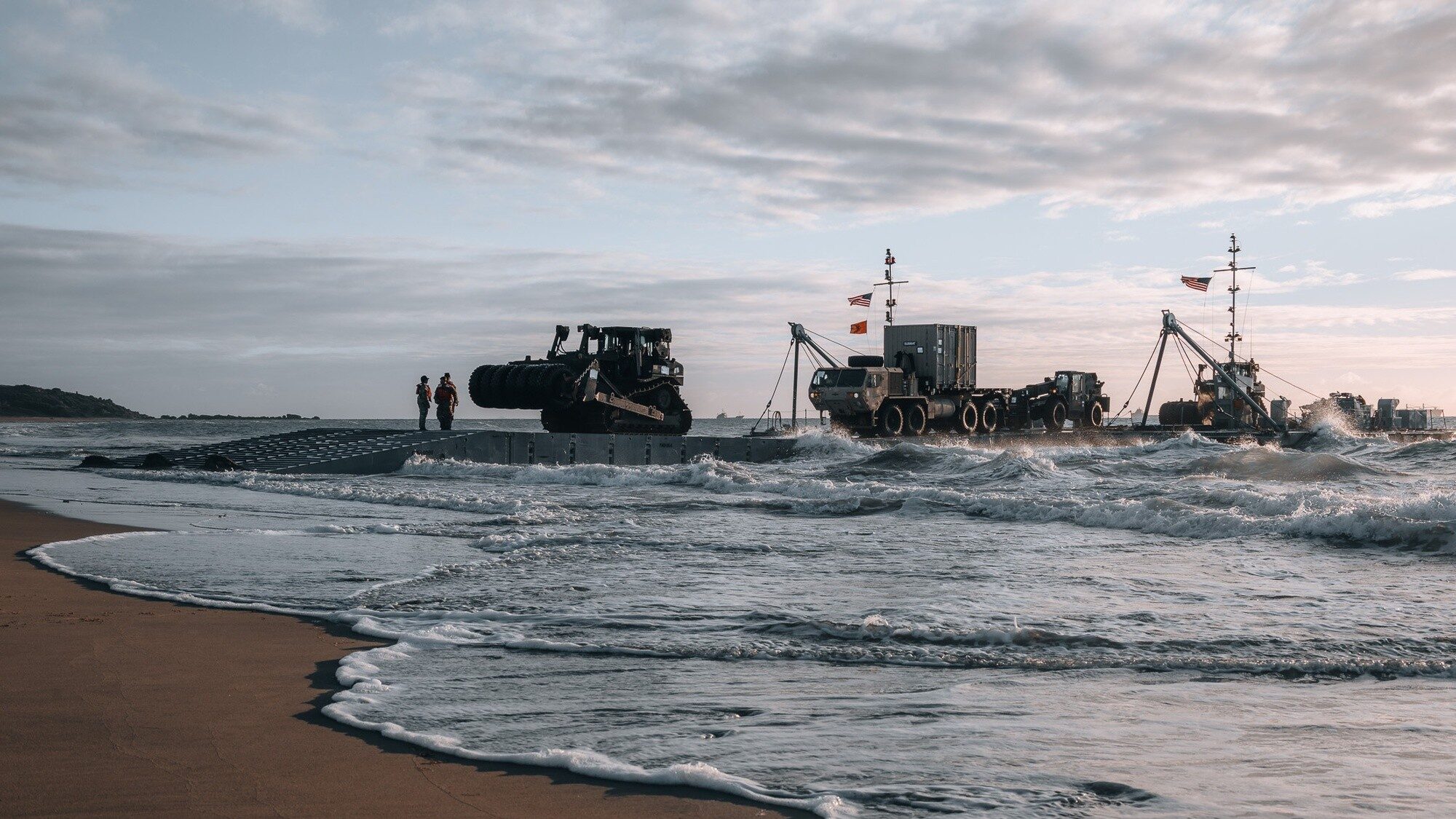ASHLEY ROQUE

Although the US military plans to participate in a variety of Indo-Pacific-centered exercises in the coming years, a four-star Army general is eyeing one in particular that will let the joint force to test how well it can keep itself supplied in a fight — both across the vast waters of the Pacific and further from the front back home.
Speaking at an Association of the US Army breakfast today, Army Materiel Command head Gen. Charles Hamilton broadly detailed a multi-pronged plan designed, in part, to shore up military sustainment contingency blueprints.
First, in August, he is gathering together senior military leaders — including commanding generals from Air Mobility Command, US Transportation Command, Air Force Materiel Command — and industry for a “seminar” at the Army’s Redstone Arsenal in Huntsville, Ala. Once there, the group will focus on the first 30 to 60 days of a conflict in the Indo-Pacific.
“That’s a congested space. There’s a lot of moving pieces and what we’ve got to do is detangle it … and integrate better in this time,” said Hamilton. Part of that discussion, he added, will include contested logistics inside the theater, but also explore the nuts and bolts of how the services work together inside the United States.
“There’s no way we go into a large-scale fight without relying on allies and partners for supply chain airfields [and ports]. … We’ve identified [those], you know, down to every airfield and port there is,” he said.
“Have we done the same thing here in the United States? If I’m moving something out of Fort Cavazos, and I get bogged down, am I going to go all the way to Fort Sam [Houston] or Fort Bliss to continue that Army movement?” Hamilton later added, referring to three spread out Army bases in Texas. “Or am I going to coordinate with two Air Force bases that are in between those two areas? We’re probably not there yet. That’s part of that joint conversation we’ve got to have.”
The aim is to have the Alabama discussions lead to an exercise in the Indo-Pacific focused on US military sustainment there, rather than focusing on maneuvers like most exercises. Lessons and observations from that event, and others, could then be used to help Pentagon leaders decide on a host of logistics questions like how to handle prepositioned stock plans across the region.
When it comes to Army Prepositioned Stocks (APS), for example, the list currently includes APS-1 designated for the US, APS-2 for Europe, the ocean-roaming APS-3 afloat, APS-4 for Northeast Asia, APS-5 for Southwest Asia, APS-6 for Army South and APS-7 for Army Africa.
During a December 2023 interview with Breaking Defense, AMC deputy Lt. Gen. Christopher Mohan explained that military leaders are grappling with an array of stockpile questions after watching Ukraine burn through munitions provided by US and other nations. Mohan said he is in favor of expanding land-based equipment numbers in the Indo-Pacific region to reduce transit times and avoid hurdles like agricultural inspections. But, he said, it has to be done very “carefully,” with the necessary bilateral deals and decisions about what’s critical and what’s not.
“When that APS is floating around on a ship that says, ‘US Navy’ on the side of it, we have a lot of decision space, [but] when put it in other countries, the complexity from a geopolitical standpoint, goes up,” Mohan said at the time.
In addition to evolving APS plans, the service is looking for new ways to deliver equipment to supplies and equipment to the joint force (i.e., autonomous watercraft and drones). It stood up a contested logistics cross-functional team inside its future command last year to look at just that.
Army leaders have also been using exercises like Talisman Sabre 23, a biennial exercise between the US and Australia, to practice things like joint petroleum over-the-shore and joint logistics over-the-shore (JLOTS), which the Pentagon will draw on for the new plan to build a pier into Gaza to deliver food and other aid to trapped Palestinians.
Needless to say, there’s an enhanced focus on logistics and sustainment questions, especially at a time when wars inside Ukraine and Gaza rage on and the US military is eyeing the potential for large-scale combat operation in he waters of the Indo-Pacific region.
“We have gotten a lot better over time. We used to just throw the green flag down,” Hamilton said. “Now, we’ll make the planners and the commander’s think at echelon [about] how they will react in a sustaining situation.”
No comments:
Post a Comment